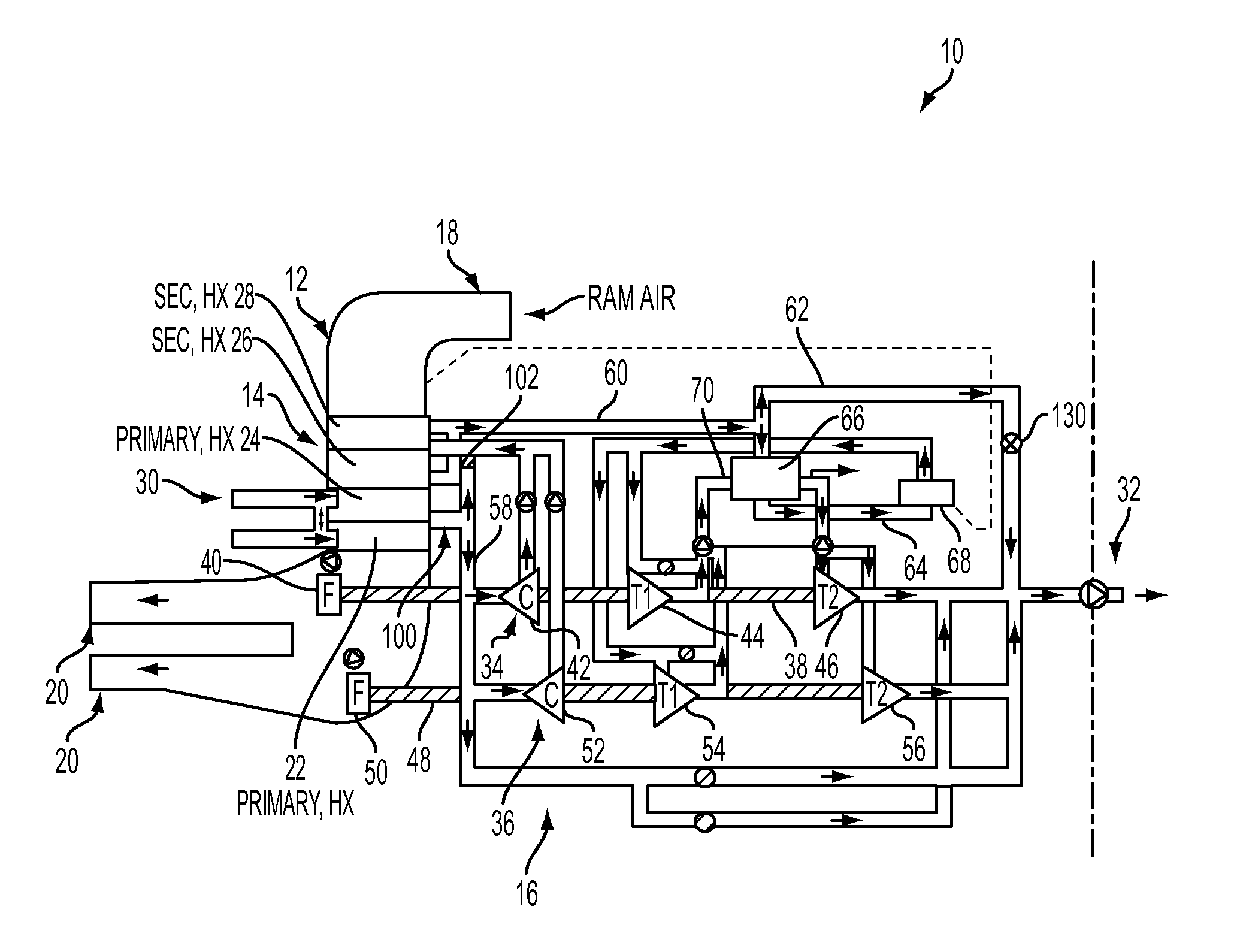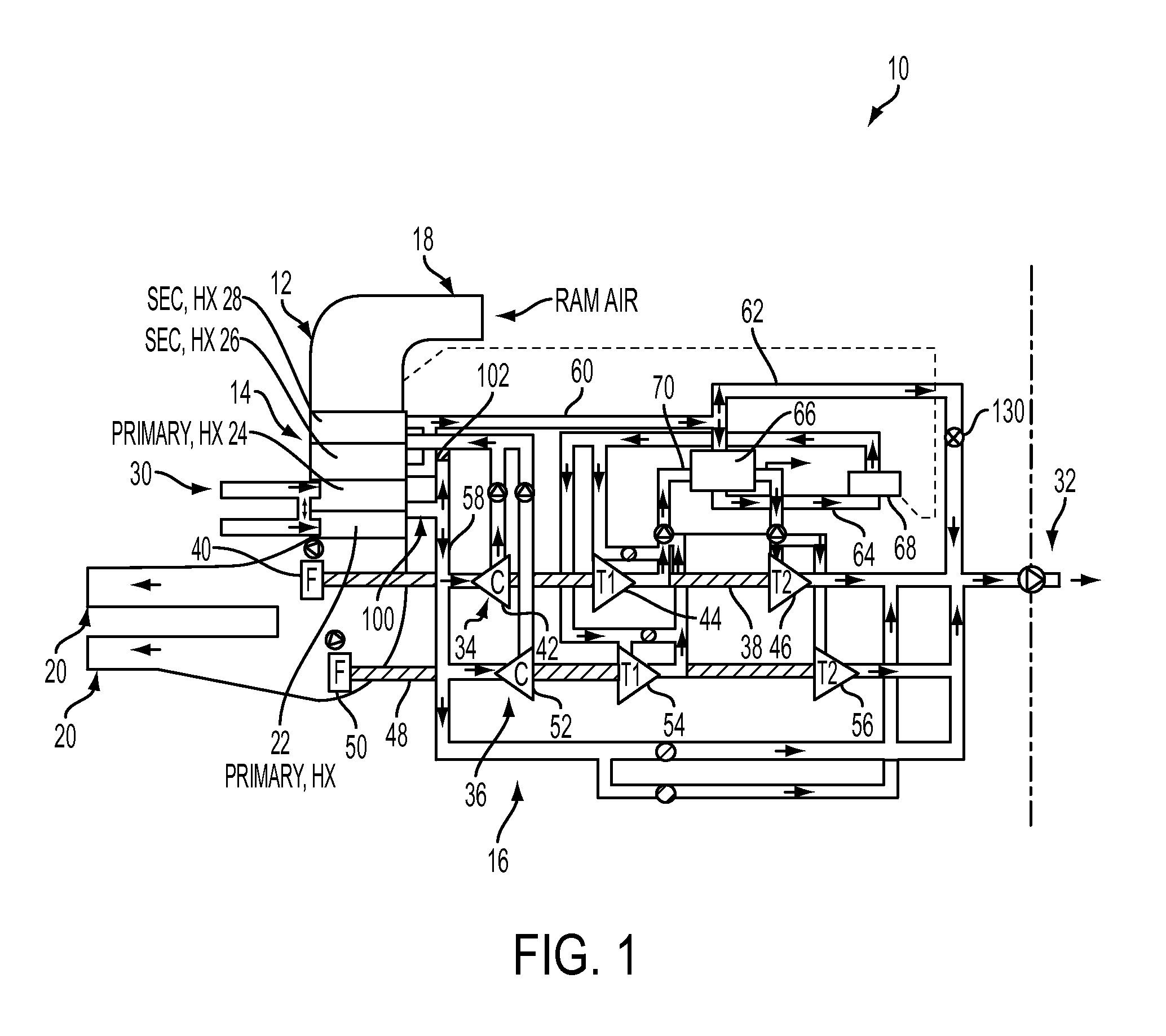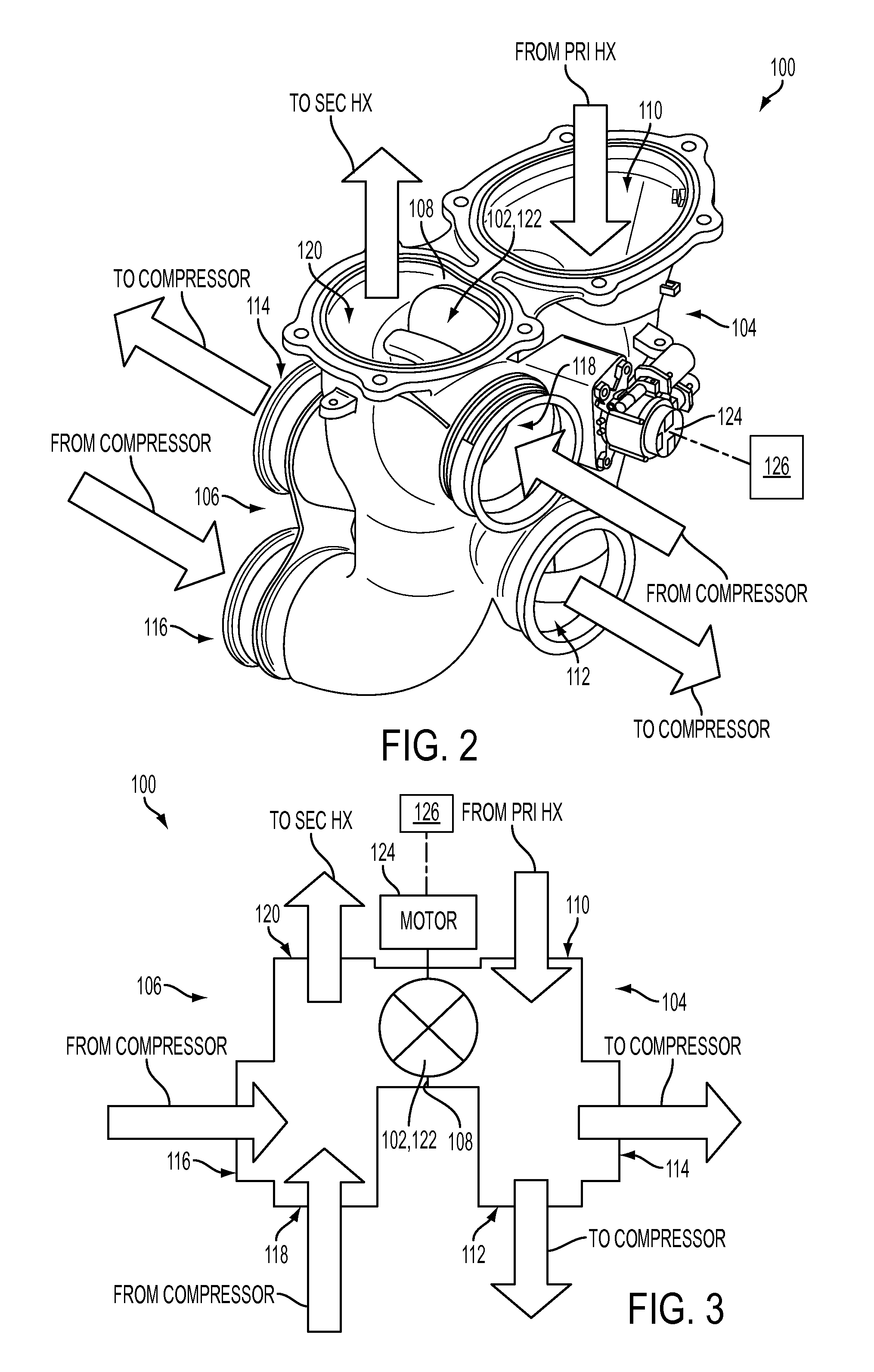Multi-port compressor manifold with integral bypass valve
- Summary
- Abstract
- Description
- Claims
- Application Information
AI Technical Summary
Benefits of technology
Problems solved by technology
Method used
Image
Examples
Embodiment Construction
[0014]Described herein are systems and methods for improved efficiency and performance of air generation units. The systems include a multi-port compressor manifold with an integral bypass valve to direct air from a primary heat exchanger directly to a secondary heat exchanger, thereby bypassing a system compressor.
[0015]FIG. 1 illustrates an exemplary air generation unit (AGU) or system 10 that generally includes a ram air duct 12, a dual heat exchanger 14, and an air cycle machine (ACM) 16.
[0016]Ram air duct 12 includes an inlet 18 and one or more outlets 20. Inlet 18 receives ram air as a cooling fluid from a source outside of system 10 such as ambient air outside of an aircraft (not shown). The ram air passes through dual heat exchanger 14 for heat exchange therein and passes to outlet 20.
[0017]Dual heat exchanger 14 includes a first primary heat exchanger 22, a second primary heat exchanger 24, a first secondary heat exchanger 26, and a second secondary heat exchanger 28. In th...
PUM
| Property | Measurement | Unit |
|---|---|---|
| Altitude | aaaaa | aaaaa |
Abstract
Description
Claims
Application Information
 Login to View More
Login to View More - R&D
- Intellectual Property
- Life Sciences
- Materials
- Tech Scout
- Unparalleled Data Quality
- Higher Quality Content
- 60% Fewer Hallucinations
Browse by: Latest US Patents, China's latest patents, Technical Efficacy Thesaurus, Application Domain, Technology Topic, Popular Technical Reports.
© 2025 PatSnap. All rights reserved.Legal|Privacy policy|Modern Slavery Act Transparency Statement|Sitemap|About US| Contact US: help@patsnap.com



